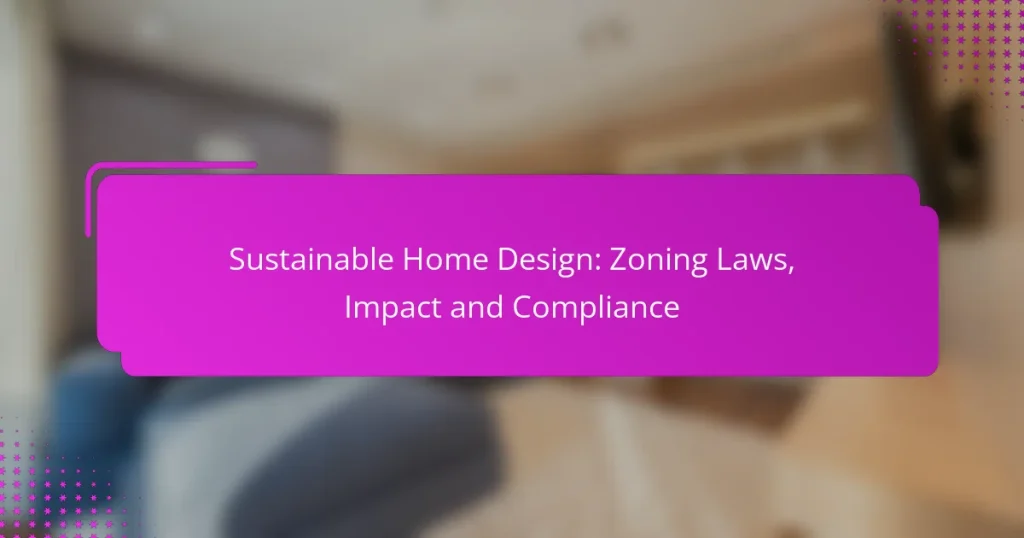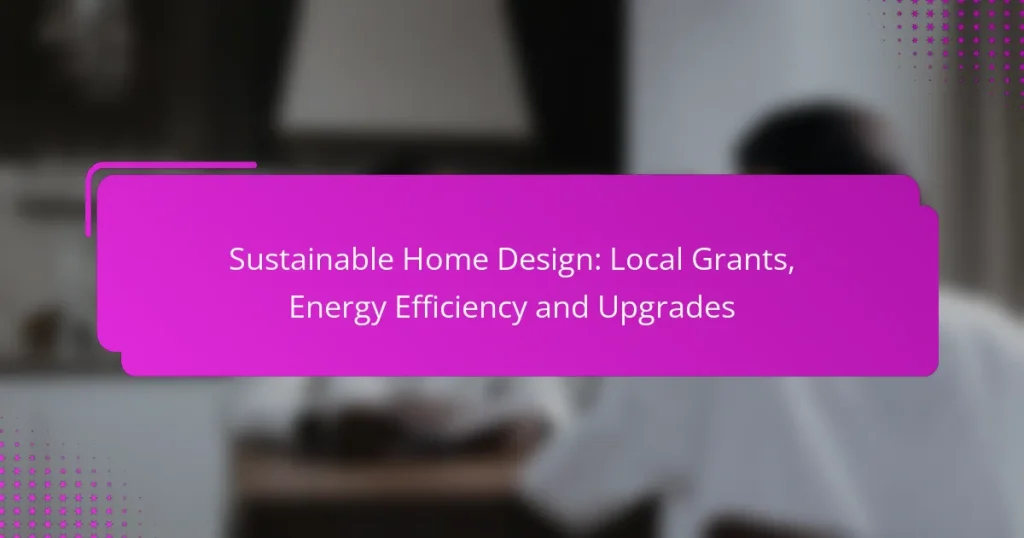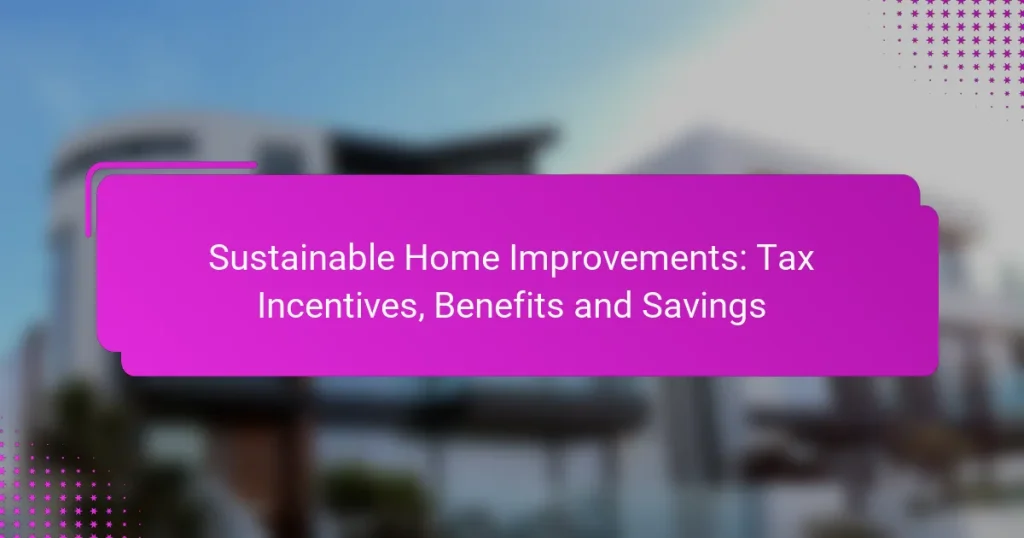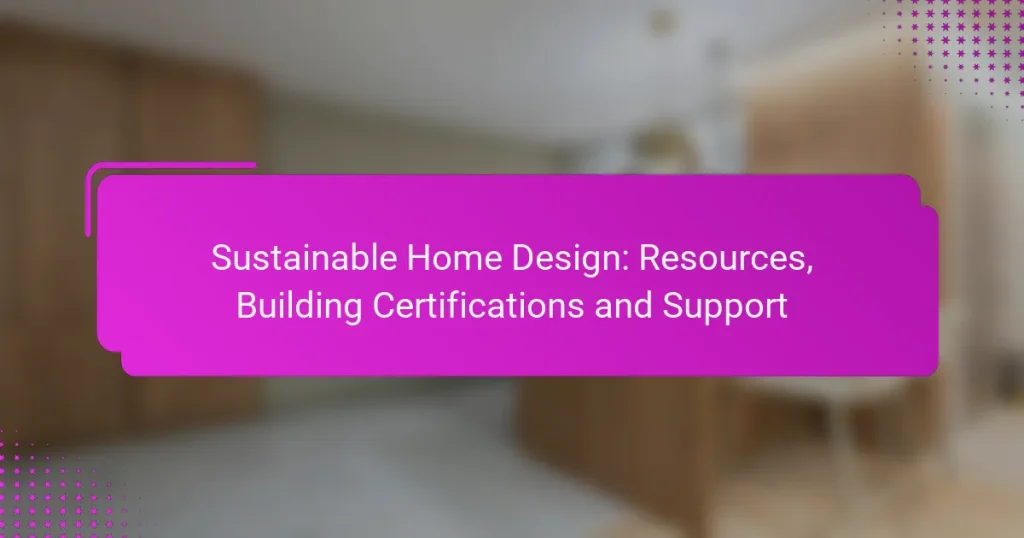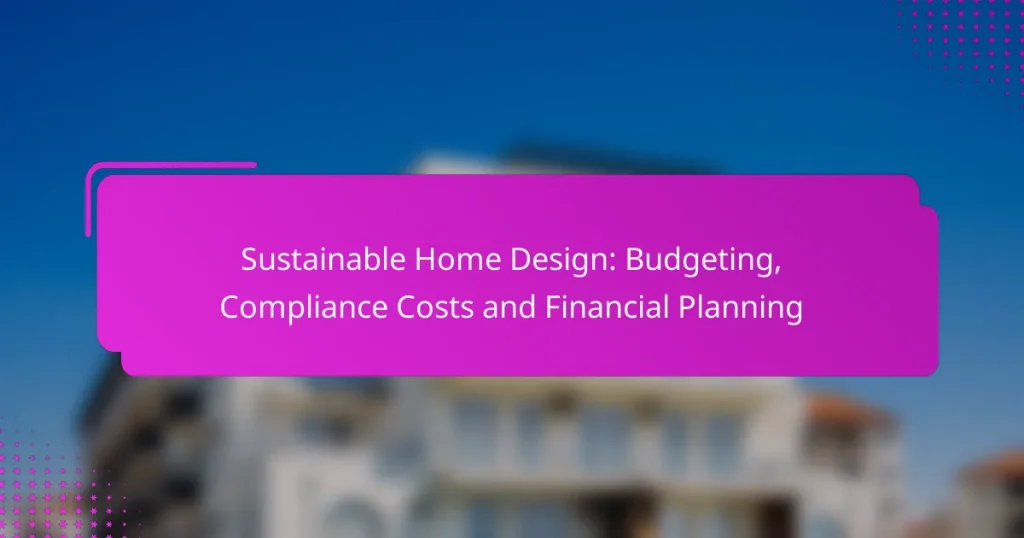Sustainable home design consulting focuses on creating energy-efficient and resource-conserving residences that comply with local regulations. By understanding building codes and zoning laws, homeowners can ensure their designs meet necessary standards while also taking advantage of various incentives such as rebates and tax credits to offset costs. This approach not only enhances indoor environments but also promotes a greener future.
Sustainable Home Design: Local Grants, Energy Efficiency and Upgrades
Sustainable Home Improvements: Tax Incentives, Benefits and Savings
Sustainable Home Design: Building Codes, Eco-Friendly Construction and Compliance
Sustainable Home Design: Key Regulations, Local Codes and Compliance
Sustainable Home Design: Resources, Building Certifications and Support
Sustainable Home Design: Budgeting, Compliance Costs and Financial Planning
What are the best practices for sustainable home design in California?
Best practices for sustainable home design in California focus on energy efficiency, resource conservation, and enhancing indoor environments. Incorporating these strategies not only meets regulatory standards but also maximizes incentives available for homeowners.
Energy-efficient materials
Using energy-efficient materials is crucial for sustainable home design. Look for products with high insulation values, such as advanced framing techniques, insulated concrete forms, or structural insulated panels. These materials help reduce energy consumption and lower utility bills.
Consider sourcing materials locally to minimize transportation emissions and support regional economies. Recycled or reclaimed materials can also significantly reduce the environmental impact of construction.
Passive solar design
Passive solar design harnesses natural sunlight for heating and lighting, reducing reliance on artificial energy sources. Key elements include strategically placed windows, thermal mass materials, and overhangs that block excessive summer sun while allowing winter sunlight to penetrate.
In California, orienting the home to maximize southern exposure can enhance passive solar benefits. This approach can lead to energy savings of 30-50% compared to traditional designs.
Water conservation systems
Implementing water conservation systems is essential in California, where water scarcity is a concern. Rainwater harvesting systems can collect and store rain for irrigation, while greywater systems recycle water from sinks and showers for landscape use.
Installing low-flow fixtures and drought-resistant landscaping can further reduce water usage. Homeowners can often receive rebates for these installations, making them financially attractive.
Indoor air quality enhancements
Enhancing indoor air quality is a vital aspect of sustainable home design. Use low-VOC (volatile organic compounds) paints, finishes, and adhesives to minimize harmful emissions. Proper ventilation systems, such as energy recovery ventilators, can help maintain fresh air circulation.
Incorporating plants that improve air quality, such as spider plants or peace lilies, can also contribute to a healthier indoor environment. Regular maintenance of HVAC systems is essential to ensure optimal air quality.
Smart home technology integration
Integrating smart home technology can significantly enhance energy efficiency and convenience. Smart thermostats, lighting systems, and energy monitoring devices allow homeowners to optimize energy use and reduce waste.
Consider systems that can be controlled remotely or programmed to adjust based on occupancy patterns. Many utility companies in California offer incentives for installing energy-efficient smart devices, making them a cost-effective option.
How to ensure regulatory compliance for sustainable homes?
To ensure regulatory compliance for sustainable homes, it is essential to understand and adhere to local building codes, zoning regulations, and permitting processes. Each of these elements plays a crucial role in the design and construction of eco-friendly residences.
California Green Building Standards Code
The California Green Building Standards Code, also known as CALGreen, sets mandatory green building requirements for new residential and commercial buildings. This code focuses on energy efficiency, water conservation, and sustainable materials, providing a framework for environmentally responsible construction practices.
Key areas of compliance include energy performance standards, waste reduction during construction, and indoor air quality measures. Builders must demonstrate adherence to these standards through documentation and inspections, which can vary based on the project’s scope.
Local zoning regulations
Local zoning regulations dictate how land can be used and what types of buildings can be constructed in specific areas. These rules can affect the size, height, and placement of sustainable homes, ensuring that they fit within the community’s planning framework.
Homeowners should consult their local planning department to understand zoning restrictions, such as setbacks, lot coverage, and permissible uses. Non-compliance can lead to costly delays or modifications, so it’s crucial to factor these regulations into the design process from the outset.
Permitting processes
The permitting process is a critical step in achieving regulatory compliance for sustainable homes. This process involves submitting plans and documentation to local authorities for approval before construction begins. Each jurisdiction has its own requirements and timelines, which can affect project schedules.
To streamline the permitting process, homeowners should prepare comprehensive plans that clearly demonstrate compliance with all relevant codes and regulations. Engaging with local officials early in the design phase can help identify potential issues and expedite approvals, reducing the risk of project delays.
What incentives are available for sustainable home design?
Various incentives exist for sustainable home design, aimed at encouraging energy-efficient practices and renewable energy use. These incentives can include rebates, tax credits, and utility programs that help offset the costs of implementing sustainable features in homes.
California Solar Initiative rebates
The California Solar Initiative (CSI) provides financial incentives for homeowners who install solar energy systems. Rebates are based on the size of the solar installation, with larger systems typically receiving higher rebates. Homeowners can expect to see incentives that cover a significant portion of the installation costs, making solar energy more accessible.
To qualify, homeowners must use approved solar equipment and work with certified installers. It’s essential to apply for the rebate before installation to secure funding, as funds are limited and allocated on a first-come, first-served basis.
Federal tax credits for energy efficiency
Homeowners can benefit from federal tax credits for energy-efficient upgrades, such as insulation, windows, and HVAC systems. These credits can cover a percentage of the costs, often up to 30% for specific improvements, significantly reducing the overall expense. The credits are available for both new constructions and renovations.
To take advantage of these tax credits, homeowners must ensure that their upgrades meet specific energy efficiency standards set by the IRS. Keeping detailed records and receipts is crucial for claiming these credits during tax season.
Local utility incentives
Many local utility companies offer incentives for energy-efficient home improvements, including rebates for energy-efficient appliances and home energy audits. These programs vary widely by region, so homeowners should check with their local utility provider for specific offerings and eligibility requirements.
Participating in these programs can lead to immediate savings on utility bills and may include additional benefits like free energy assessments. Homeowners should be proactive in researching and applying for these incentives to maximize their savings on sustainable home design projects.
What are the key criteria for selecting a sustainable home design consultant?
When selecting a sustainable home design consultant, prioritize their understanding of local regulations, their past project portfolio, and client feedback. These criteria ensure that the consultant can effectively navigate compliance issues while delivering quality sustainable designs.
Experience with local regulations
A consultant’s familiarity with local building codes and sustainability regulations is crucial. They should be well-versed in standards such as LEED or local energy efficiency mandates, which can vary significantly by region. This knowledge helps avoid costly mistakes and ensures that your project meets all legal requirements.
Ask potential consultants about their experience with specific regulations in your area. For instance, if you are in the EU, understanding the Energy Performance of Buildings Directive (EPBD) is essential. A consultant who has successfully navigated these regulations will save you time and resources.
Portfolio of sustainable projects
Reviewing a consultant’s portfolio provides insight into their design style and expertise in sustainable practices. Look for a variety of completed projects that demonstrate innovative use of materials, energy-efficient designs, and integration of renewable energy sources. A diverse portfolio indicates adaptability and creativity.
Consider asking for case studies that highlight specific challenges and how they were overcome. This can give you a clearer picture of the consultant’s problem-solving skills and their ability to implement sustainable solutions effectively.
Client testimonials and reviews
Client testimonials and reviews offer valuable perspectives on a consultant’s reliability and quality of work. Look for feedback that specifically mentions the consultant’s ability to deliver on sustainability goals and their communication style throughout the project. Positive reviews can build confidence in your choice.
Consider checking online platforms or asking for references directly from the consultant. Engaging with past clients can provide deeper insights into their experiences, helping you gauge whether the consultant aligns with your expectations and project needs.
How can sustainable home design impact property value?
Sustainable home design can significantly enhance property value by making homes more attractive to buyers who prioritize energy efficiency and eco-friendliness. Features like renewable energy systems and sustainable materials can lead to higher resale prices and quicker sales.
Increased market demand
The growing awareness of environmental issues has led to increased market demand for sustainable homes. Buyers are often willing to pay a premium for properties that demonstrate energy efficiency and sustainable practices, which can translate into higher property values.
In regions with strong green building initiatives, such as California or Germany, homes built to sustainable standards often see a marked increase in interest from prospective buyers. This trend reflects a broader shift towards valuing eco-conscious living.
Lower utility costs
Sustainable home design typically incorporates energy-efficient systems that can drastically reduce utility costs. Homeowners may experience savings on electricity and water bills, which can make the property more appealing to potential buyers.
For instance, homes equipped with solar panels or high-efficiency appliances can save hundreds to thousands of dollars annually. These savings can be a compelling selling point, enhancing the overall value of the property.
Long-term investment benefits
Investing in sustainable home design can yield long-term financial benefits, making properties more resilient to market fluctuations. Homes that are energy-efficient often maintain their value better than traditional homes during economic downturns.
Additionally, many regions offer tax incentives or rebates for sustainable upgrades, further enhancing the return on investment. Homeowners should consider these financial advantages when evaluating the potential value of sustainable features in their properties.
What are the emerging trends in sustainable home design?
Emerging trends in sustainable home design focus on energy efficiency, renewable materials, and smart technology integration. These trends prioritize reducing environmental impact while enhancing comfort and functionality in residential spaces.
Energy Efficiency Innovations
Energy efficiency innovations are at the forefront of sustainable home design. This includes the use of high-performance insulation, energy-efficient windows, and advanced HVAC systems that minimize energy consumption. Homeowners should consider implementing technologies like solar panels and energy storage systems to further enhance efficiency.
For instance, homes equipped with solar panels can reduce electricity bills significantly, often by 50% or more, depending on local sunlight availability. Additionally, smart thermostats can optimize heating and cooling, leading to further energy savings.
Use of Renewable Materials
The use of renewable materials is a key aspect of sustainable home design. Materials such as bamboo, reclaimed wood, and recycled metal not only reduce waste but also lower the carbon footprint of construction. Choosing locally sourced materials can further enhance sustainability by reducing transportation emissions.
Homeowners should look for certifications like FSC (Forest Stewardship Council) for wood products to ensure responsible sourcing. Incorporating these materials can also add unique aesthetic qualities to a home.
Smart Home Technology
Smart home technology plays a crucial role in sustainable design by improving energy management and enhancing user experience. Devices such as smart meters, automated lighting, and energy monitoring systems allow homeowners to track and reduce their energy consumption effectively.
Implementing smart technology can lead to energy savings of 10-30% annually. Homeowners should consider integrating systems that can be controlled remotely, providing convenience and efficiency in energy use.
